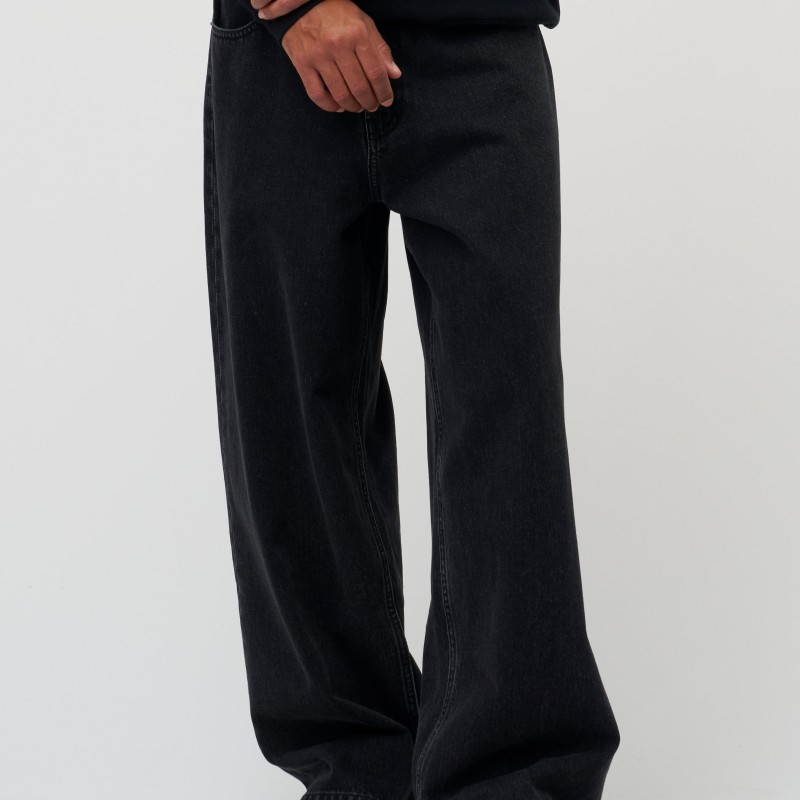Finding the perfect pair of jeans can often be a daunting task. With various sizes, styles, and fits, even a seemingly perfect pair might just need a minor adjustment to achieve the desired comfort and look. One of the most common alterations needed for jeans is taking in the waist. This adjustment is crucial not only to improve the fit but also to enhance your overall style and comfort. Many individuals deal with baggy waists after purchasing jeans, which can lead to discomfort, an unflattering appearance, or the need to constantly pull up your pants. Fortunately, you can easily take in the waist of jeans at home with some basic sewing skills. In this comprehensive guide, I will walk you through various methods to take in the waist of jeans, the tools you’ll need, as well as tips for the how to take in waist of jeans.
Contents
Understanding the Need for Alterations
Understanding your body shape and specific fitting challenges can go a long way in determining how to take in the waist of jeans effectively.
Why Jeans Often Don’t Fit Perfectly
- Variability in Sizes: Sizes vary across brands and styles, making it challenging to find jeans that fit perfectly. Even jeans labeled as the same size may fit differently due to variances in manufacturing.
- Body Shape: Everyone has a unique body shape. Some individuals may have fuller thighs, while others may have a smaller waist, causing the jeans to fit awkwardly in certain areas.
- Inaccurate Measurements: People’s body dimensions change over time, leading to different needs for fit. Additionally, many people may not accurately measure their waist and hip sizes, resulting in poor-fitting jeans right from the start.
Benefits of Taking in the Waist of Jeans
Taking in the waist of jeans offers numerous benefits:
- Enhanced Comfort: A properly fitted waist helps jeans sit comfortably without pulling or slipping down.
- Improved Appearance: A tailored fit can enhance your overall silhouette and style. Well-fitted jeans offer a polished look, which boosts confidence.
- Cost-Effective Solution: Instead of purchasing new jeans or discarding ill-fitting pairs, taking in the waist is an economical way to achieve a perfect fit.
Gathering Your Supplies
Before diving into the process of taking in the waist of jeans, ensure you have the necessary supplies.
Basic Sewing Tools
- Sewing Machine: A reliable sewing machine is ideal for efficient and clean alterations. While hand-sewing is an option, a machine provides better results for most individuals.
- Measuring Tape: A measuring tape is essential for accurate measurements. This tool will help you determine how much of the waist needs to be taken in.
- Fabric Scissors: Invest in a good pair of fabric scissors to ensure a clean cut. Dull scissors can lead to fraying and messy edges.
- Pins or Fabric Clips: Use pins or fabric clips to hold the fabric in place while you sew. This prevents shifting during the sewing process.
- Thread: Choose thread that matches the color of your jeans. Regular polyester thread is typically strong enough for denim.
- Seam Ripper: A seam ripper is used to remove the existing seam if needed, particularly when the alteration requires significant adjustment.
Optional Tools
- Iron: While not strictly necessary, an iron can help flatten seams and provide a finished look to your alteration.
- Tailor’s Chalk or Fabric Markers: Use these tools to mark your measurements and cutting lines. This will enhance accuracy during the alteration process.

Measuring the Waist Before Alteration
Accurate measurements are crucial when learning how to take in the waist of jeans. Here’s how to properly measure:
Step-by-Step Measurement Guide
- Wear the Jeans: Put on the jeans you want to alter. This way, you can assess how they fit and determine necessary adjustments.
- Identify the Problem Area: Stand in front of a mirror and assess how much extra fabric is present at the waist. Pinch the fabric together to get a visual idea of how much you will take in.
- Use Your Measuring Tape: With the jeans on, use your measuring tape to measure how much space needs to be taken in at the waist.
- Mark the Measurement: Using tailor’s chalk, lightly mark where the waist needs to be adjusted. Make sure to note the difference on both sides to maintain symmetry.
- Take Note of Hip Measurements: In some cases, it’s helpful to take hip measurements as well. Knowing this can assist in determining if other adjustments are necessary.
Methods for Taking in the Waist of Jeans
There are several methods for taking in the waist of jeans, each suitable for different levels of sewing expertise. Choosing the right technique depends on how substantial the change will be.
Method 1: The Simple Take-In
This straightforward method is best for minor adjustments.
- Pin/Pinch the Fabric: Pinch the excess fabric at the waist until it feels snug, ensuring the fit is comfortable.
- Mark the New Waistline: Once comfortable, mark the new waistline with tailor’s chalk.
- Sewing: Using a sewing machine, sew along the new marked line. Start from the waistband and continue sewing down until you reach the desired point on the legs.
- Cut Excess Fabric: Once sewn, remove the excess fabric carefully with fabric scissors.
- Finishing Touches: Iron the seams and ensure everything lies flat. Remove the pins, and try the jeans on to check the fit. Make adjustments if necessary.
Method 2: Taking in the Waist using Side Seams
When there is a larger amount to take in, adjusting the side seams may be more effective.
- Turn the Jeans Inside Out: Start by turning your jeans inside out. This will allow you to see and access the seams easily.
- Identify the Side Seams: Locate the seams on either side of the jeans’ waistline.
- Pinch and Mark: Pinch the fabric at the side seams according to your measurements and mark the new seam lines.
- Sew and Cut: Sew along the newly marked lines and cut off excess fabric as needed. Be sure to sew securely to prevent future fraying.
- Reinforce the Waistband: If necessary, reinforce the waistband by sewing it back or adding stitches in any loose areas.
Method 3: Altering the Waistband
For those who want a more comprehensive alteration, adjusting the waistband directly may be the best option.
- Unpick the Waistband: Carefully use a seam ripper to unpick the waistband from the jeans. Be cautious not to damage the fabric.
- Take In the Waistband: Mark how much fabric you need to take in on the waistband and trim it to your desired size.
- Sew the Waistband: Adjust the waistband to the new size, pin, and sew it back onto the jeans.
- Reattach the Waistband: Pin the waistband back to the jeans and stitch it down, securing it firmly.
- Finish Your Hemline: Iron down the seams and finish off by trimming any excess fabric for a clean look.
Tips for Successful Alterations
While taking in the waist of jeans might seem straightforward, several tips and tricks can enhance your results:
Always Start with a Test Fit
Always test fit the jeans throughout the process. Before making permanent alterations, checking the fit multiple times helps you achieve the desired outcome.
Use a Quality Thread
Selecting high-quality thread dedicated for denim will lead to a stronger and more durable seam. A thicker thread can withstand the heavy fabric better than standard threads.
Take Your Time
Rushing through the process can lead to mistakes or unsatisfactory results. Take your time to ensure accurate measurements and neat sewing.
Keep Fabric Neat
When you are sewing, keep the fabric as neat as possible to avoid bunching or uneven seams. Smooth out any wrinkles before sewing to achieve a better finish.
Learn Basic Sewing Techniques
If you’re new to sewing, consider taking a beginner’s sewing class or watching online tutorials to develop your skills. Basic sewing techniques can greatly improve your results.
Choosing the Right Jeans for Alteration
Not all jeans are suitable for taking in the waist, and understanding which styles work best will enhance your tailoring success.
Consider Fabric Composition
Jeans with a higher amount of cotton have less stretch and may require different techniques than those with spandex or elastane. The fabric type can impact how you alter the jeans.
Explore Styles That Suit Your Body Shape
Consider your body shape when looking for jeans to alter. Styles that inherently fit your form may require fewer adjustments than more fitted styles.
Assess Current Fit and Comfort
When selecting jeans for alteration, opt for pairs that feel comfortable in the hips and thighs. If those areas fit well, the focus can remain solely on adjusting the waist.
Conclusion
In summary, knowing how to take in the waist of jeans can be a rewarding skill that leads to a better-fitting wardrobe. With the right tools and techniques, you can easily adjust jeans to ensure they fit comfortably and stylishly. Whether you choose to make minor adjustments with simple sewing or engage in more extensive alterations, the satisfaction of wearing jeans that fit perfectly is unmatched.
By understanding the background of those baggy jeans, making thoughtful alterations, and applying basic sewing skills, you can enjoy a tailored fit without spending a fortune. As fashion trends continue to evolve, staying flexible with alterations keeps your wardrobe fresh and stylish. So whether you’re a seasoned sewer or a beginner, with practice, you can confidently tackle the task of taking in the waist of your jeans for that perfect fit. Enjoy your tailoring journey and the new possibilities it creates in your wardrobe!